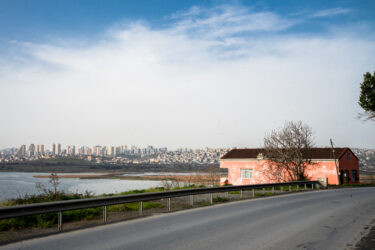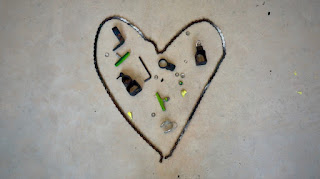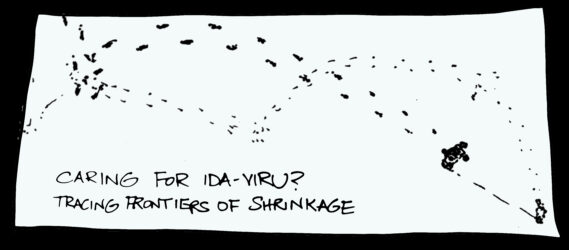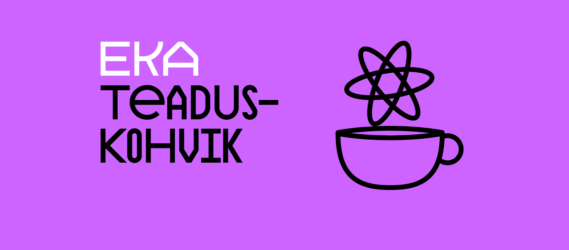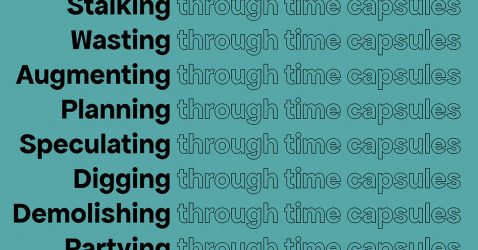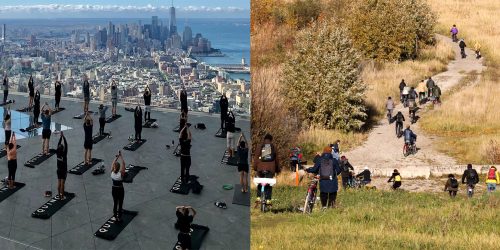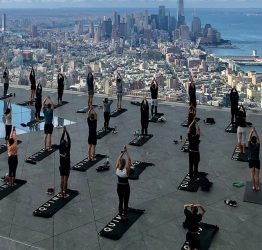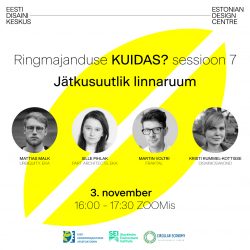AksessuaaridisainAnimatsioonArhitektuur ja linnaplaneerimineArhitektuuriteaduskondAvatud akadeemiaDesign and Technology FuturesDisainiteaduskondDoktorikoolDoktorikoolEhte- ja sepakunstErialadERKI MoeshowFotograafiaGaleriiGraafikaGraafiline disainHaldusosakond ja töökojadInstallatsioon ja skulptuurIT osakondJätkusuutliku disaini laborJoonistamineKaasaegne kunstKeraamikaKlaasKommunikatsiooniosakondKunstiharidusKunstiteadus ja visuaalkultuurKunstikultuuri teaduskondMaalMoedisainMuinsuskaitse ja konserveerimineÕppeosakondRaamatukoguRahandusosakondRektoraatSisearhitektuurStsenograafiaTasapinnaliste tehnoloogiate tehnokeskusTeadus- ja arendusosakondTegevuskunstTekstiilidisainTootedisainTugistruktuuridÜliõpilasesindusUncategorizedUrbanistikaUusmeediaVabade kunstide teaduskondVälissuhete osakond
Rubriik: Urbanistika
30.05.2022
Urban Studies Master’s Thesis Presentation and Defence
Urbanistika
10:00-10:10 Introductions
10:10-11:10 (EEST)
Luisa Fernanda Ayala Torres
Precariousness in the Transformation of Labour: Through Working Class Identity in the city of Turin
Between the 1960s and 1980s, nine million Italians migrated from the agricultural regions of Italy to the productive areas of Turin, shaping the periphery of the city from a rural to an industrial area. The Post-War economic boom provided jobs in the northern plants, giving life to a workers’ hegemony and demographic, social, and cultural transformation. This socioeconomic transformation that affected the organisation of workers, labour, political activity, and society in general, was manifested in two cases. The Palace of Labour, an avant-garde building intended to celebrate the struggles of the working class with an exhibition focused on “man and his progress”, and the case of Mirafiori Sud, a working class neighbourhood symbolising the association of workers. In this way, this thesis explores the identity of the working class in the contemporary city of Turin, where security in neoliberal times no longer needs the scope of the protective techniques of the liberal social State, and as a consequence precarization is now the norm. This is reflected in the transformation of labour manifesting itsel through productive connection with others, where labour is not purely characterised by the increasing capitalization of social life but is effectively reflected with others, producing new social relations.
Examined by Alberto Vanolo (University of Turin) and Aro Velmet (University of Southern California)
11.15-12:15 (EEST)
Mira Samonig
the matter of right-wing populism in Polish LGBT-free zones; towards a with-standing xenourbanism?
Almost a third of Poland had been declared an ‘LGBT-free zone’ in 2020, stigmatizing the LGBTIQP+ community as a threat to Polish identity; this labeling remains a reality for many Polish towns. In this thesis, I am turning towards the concept of the ‘LGBT-free zones’ as a case to investigate the material reality of right-wing populism. I seek to develop a third position to a historical or new materialist understanding in order to investigate such material reality. By that, the ways values find physical expression and thus possibly mobilize oppressive attitudes into ever new futures ahead are traced. It becomes quite evident that the way structures of oppression are advanced and maintained within the public realm exists quite dominantly in everyday narratives. In a bottom-up manner, right-wing populism is advanced on the street; yet, it is by far not perceived by everyone. This marks the entry point for sketching out a possible approach to how the discipline of urbanism could position itself in social struggles. Drawing on Helen Hester’s Xenofeminism, the thesis introduces the concept of xenourbanism describing urbanism based on the conceptual notion of solidarity without sameness. I argue that the notion of xeno- as a prefix attached to urbanism focuses on an inherent transformational potential within the current, rendering a perceived unarming reality into a weapon of contestation and by that suggesting trajectories away from paralyzing no-alternative narratives.
Examined by Piotr Plucienniczak (Warsaw Academy of Fine Arts) and Helen Runting (Secretary)
12:25-13:35 (EEST)
Zahaan Khan
Tourism-Led Gentrification: The Case of Dal Lake in Kashmir
The dissertation explores tourism-led gentrification, its causes and the impact on the communities living in and around the ecologically-sensitive region of Dal Lake in Kashmir. The dissertation employs methodological triangulation using interviews, survey and policy document analysis, as methods. The policy document in question is the Srinagar Master Plan 2035 issued by the Srinagar Development Authority. Analysing the correlation between tourism and gentrification in a conflict-torn region and using displacement as a conceptual lens, the thesis maps the socio-cultural and economic aspects of touristification especially in relation to the everyday lives of the communities. The dissertation employs a two-pronged analytical approach by using two categories – land milieu and water milieu – to foreground the patterns and impact of gentrification in and around the lake. The analysis of the land milieu concerns itself with a detailed exploration into Boulevard, the long promenade along the lake’s periphery. It further discusses holiday rentals and issues of mobility and maps the city’s land-use patterns particularly in relation to expansion along the lake’s periphery. The study of the water milieu, on the other hand, is an exploration into the historical houseboats of Kashmir and the local hanji (or haenz) community; foregrounding the issues concerning policies of renovation and relocation of
houseboats. The dissertation also delves into the government’s land use and tourism-driven development plans around the lake, especially post abrogation of
Article 370 of the Indian constitution that gave ‘special status’ to the region.
Examined by Dr Mathew Varghese (Mahatma Gandhi University) and Karlis Ratnieks (EKA)
13:35-14:25 Lunch
14:25-15:25 (EEST)
Egemen Mercanlioglu
THE WORK OF A RIFT: Kanal İstanbul and Turkey’s Authoritarian Neoliberalism
Turkey under the leadership of Recep Tayyip Erdoğan and his Adalet ve Kalkınma Partisi was touted as a paragon of neoliberalism and a burgeoning democracy until the late-2000s. Two decades later, the positive portrayals of the country have decidedly shifted. Turkey is now considered to have retreated from neoliberalism; an emblematic case of authoritarian turn. However, this thesis rethinks authoritarian governance as the kernel of the Erdoğan-led AKP’s brand of neoliberalism. It does so by focusing on a to-be-built urban megaproject, Kanal İstanbul—a 45-kilometer long man-made waterway, aiming to locate İstanbul as a signature node in the global web of flooding money and commodities. Using the megaproject as a lens, the thesis shows how neoliberal reforms in the early-2000s have propelled İstanbul and the construction sector as financial growth generating engines of the country. Subsequently, these
reforms have buttressed contemporary coercive governance structure and a megaproject spree in the city. Finally, the thesis briefly explores a recent but growing counter-hegemonic contestation against Erdoğan and his Kanal İstanbul, posed by the mayor of İstanbul. The thesis does not give a final verdict but explores whether or not this challenge proposes an alternative to authoritarian neoliberalism.
Examined by Dr Cemal Burak Tansel (Newcastle University) and Mattias Malk (EKA)
15:30-16:30 (EEST)
Deniz Taskin
Architecture as a Practice of Care: Case Studies of Women’s Care-Based Architecture Practices
Care as a concept is becoming more crucial in architecture and urban practice as a result of the COVID-19 pandemic’s unpredictable spatial, social, and political circumstances. The attitude of urbanized capitalism towards contemporary urban problems and its refusal to acknowledge the urgency of the climate crisis result in uncaring urban practices. The important position of architecture as a measure for assessing our place in the ecosystem and the role of architects and related disciplines in determining with whom we live together requires them to reconsider the values and priorities that drive their practice. This thesis unpacks care as a concept and ethical practice through a feminist lens by focusing on the notion of “configuration of care,” which refers to how architects express their ethical and political objectives by arranging human and nonhuman materials to achieve caring relationships in urban spaces. (Suchman 2012). It does so by focusing on the practices of women from the field of architecture and related disciplines whose contemporary practice foregrounds care and employs feminist care ethics: Careful Mapping by Spolka, Performing Architherapy by Erika Henriksson, Mutfak (Kitchen) by Merve Bedir, The Blind Alley by Elin Strand Ruin. The thesis explores certain commonalities and recurring patterns of thought in how the practitioners’ encounter and apply feminist care ethics. Finally, it discusses the potential and limits of incorporating feminist care ethics into architecture practice, as well as the potential for architectural practice to become care practice.
Examined by Agata Marzecova (EKA) and Henriette Steiner (University of Copenhagen)
Postitas Kaija-Luisa Kurik — Püsilink
Urban Studies Master’s Thesis Presentation and Defence
Esmaspäev 30 mai, 2022
Urbanistika
10:00-10:10 Introductions
10:10-11:10 (EEST)
Luisa Fernanda Ayala Torres
Precariousness in the Transformation of Labour: Through Working Class Identity in the city of Turin
Between the 1960s and 1980s, nine million Italians migrated from the agricultural regions of Italy to the productive areas of Turin, shaping the periphery of the city from a rural to an industrial area. The Post-War economic boom provided jobs in the northern plants, giving life to a workers’ hegemony and demographic, social, and cultural transformation. This socioeconomic transformation that affected the organisation of workers, labour, political activity, and society in general, was manifested in two cases. The Palace of Labour, an avant-garde building intended to celebrate the struggles of the working class with an exhibition focused on “man and his progress”, and the case of Mirafiori Sud, a working class neighbourhood symbolising the association of workers. In this way, this thesis explores the identity of the working class in the contemporary city of Turin, where security in neoliberal times no longer needs the scope of the protective techniques of the liberal social State, and as a consequence precarization is now the norm. This is reflected in the transformation of labour manifesting itsel through productive connection with others, where labour is not purely characterised by the increasing capitalization of social life but is effectively reflected with others, producing new social relations.
Examined by Alberto Vanolo (University of Turin) and Aro Velmet (University of Southern California)
11.15-12:15 (EEST)
Mira Samonig
the matter of right-wing populism in Polish LGBT-free zones; towards a with-standing xenourbanism?
Almost a third of Poland had been declared an ‘LGBT-free zone’ in 2020, stigmatizing the LGBTIQP+ community as a threat to Polish identity; this labeling remains a reality for many Polish towns. In this thesis, I am turning towards the concept of the ‘LGBT-free zones’ as a case to investigate the material reality of right-wing populism. I seek to develop a third position to a historical or new materialist understanding in order to investigate such material reality. By that, the ways values find physical expression and thus possibly mobilize oppressive attitudes into ever new futures ahead are traced. It becomes quite evident that the way structures of oppression are advanced and maintained within the public realm exists quite dominantly in everyday narratives. In a bottom-up manner, right-wing populism is advanced on the street; yet, it is by far not perceived by everyone. This marks the entry point for sketching out a possible approach to how the discipline of urbanism could position itself in social struggles. Drawing on Helen Hester’s Xenofeminism, the thesis introduces the concept of xenourbanism describing urbanism based on the conceptual notion of solidarity without sameness. I argue that the notion of xeno- as a prefix attached to urbanism focuses on an inherent transformational potential within the current, rendering a perceived unarming reality into a weapon of contestation and by that suggesting trajectories away from paralyzing no-alternative narratives.
Examined by Piotr Plucienniczak (Warsaw Academy of Fine Arts) and Helen Runting (Secretary)
12:25-13:35 (EEST)
Zahaan Khan
Tourism-Led Gentrification: The Case of Dal Lake in Kashmir
The dissertation explores tourism-led gentrification, its causes and the impact on the communities living in and around the ecologically-sensitive region of Dal Lake in Kashmir. The dissertation employs methodological triangulation using interviews, survey and policy document analysis, as methods. The policy document in question is the Srinagar Master Plan 2035 issued by the Srinagar Development Authority. Analysing the correlation between tourism and gentrification in a conflict-torn region and using displacement as a conceptual lens, the thesis maps the socio-cultural and economic aspects of touristification especially in relation to the everyday lives of the communities. The dissertation employs a two-pronged analytical approach by using two categories – land milieu and water milieu – to foreground the patterns and impact of gentrification in and around the lake. The analysis of the land milieu concerns itself with a detailed exploration into Boulevard, the long promenade along the lake’s periphery. It further discusses holiday rentals and issues of mobility and maps the city’s land-use patterns particularly in relation to expansion along the lake’s periphery. The study of the water milieu, on the other hand, is an exploration into the historical houseboats of Kashmir and the local hanji (or haenz) community; foregrounding the issues concerning policies of renovation and relocation of
houseboats. The dissertation also delves into the government’s land use and tourism-driven development plans around the lake, especially post abrogation of
Article 370 of the Indian constitution that gave ‘special status’ to the region.
Examined by Dr Mathew Varghese (Mahatma Gandhi University) and Karlis Ratnieks (EKA)
13:35-14:25 Lunch
14:25-15:25 (EEST)
Egemen Mercanlioglu
THE WORK OF A RIFT: Kanal İstanbul and Turkey’s Authoritarian Neoliberalism
Turkey under the leadership of Recep Tayyip Erdoğan and his Adalet ve Kalkınma Partisi was touted as a paragon of neoliberalism and a burgeoning democracy until the late-2000s. Two decades later, the positive portrayals of the country have decidedly shifted. Turkey is now considered to have retreated from neoliberalism; an emblematic case of authoritarian turn. However, this thesis rethinks authoritarian governance as the kernel of the Erdoğan-led AKP’s brand of neoliberalism. It does so by focusing on a to-be-built urban megaproject, Kanal İstanbul—a 45-kilometer long man-made waterway, aiming to locate İstanbul as a signature node in the global web of flooding money and commodities. Using the megaproject as a lens, the thesis shows how neoliberal reforms in the early-2000s have propelled İstanbul and the construction sector as financial growth generating engines of the country. Subsequently, these
reforms have buttressed contemporary coercive governance structure and a megaproject spree in the city. Finally, the thesis briefly explores a recent but growing counter-hegemonic contestation against Erdoğan and his Kanal İstanbul, posed by the mayor of İstanbul. The thesis does not give a final verdict but explores whether or not this challenge proposes an alternative to authoritarian neoliberalism.
Examined by Dr Cemal Burak Tansel (Newcastle University) and Mattias Malk (EKA)
15:30-16:30 (EEST)
Deniz Taskin
Architecture as a Practice of Care: Case Studies of Women’s Care-Based Architecture Practices
Care as a concept is becoming more crucial in architecture and urban practice as a result of the COVID-19 pandemic’s unpredictable spatial, social, and political circumstances. The attitude of urbanized capitalism towards contemporary urban problems and its refusal to acknowledge the urgency of the climate crisis result in uncaring urban practices. The important position of architecture as a measure for assessing our place in the ecosystem and the role of architects and related disciplines in determining with whom we live together requires them to reconsider the values and priorities that drive their practice. This thesis unpacks care as a concept and ethical practice through a feminist lens by focusing on the notion of “configuration of care,” which refers to how architects express their ethical and political objectives by arranging human and nonhuman materials to achieve caring relationships in urban spaces. (Suchman 2012). It does so by focusing on the practices of women from the field of architecture and related disciplines whose contemporary practice foregrounds care and employs feminist care ethics: Careful Mapping by Spolka, Performing Architherapy by Erika Henriksson, Mutfak (Kitchen) by Merve Bedir, The Blind Alley by Elin Strand Ruin. The thesis explores certain commonalities and recurring patterns of thought in how the practitioners’ encounter and apply feminist care ethics. Finally, it discusses the potential and limits of incorporating feminist care ethics into architecture practice, as well as the potential for architectural practice to become care practice.
Examined by Agata Marzecova (EKA) and Henriette Steiner (University of Copenhagen)
Postitas Kaija-Luisa Kurik — Püsilink
19.05.2022
“Preservation: Architecture, Nature and Politics” studio final presentations in Pärnu
Urbanistika
Preservation has achieved cultural significance as a lens through which various urban experts have come to imagine what a socially and environmentally sound future might look like. As an approach, preservation has been applied to disparate phenomena ranging from historic neighbourhoods and natural environments to democracy and identity. This studio unfolded the formative concepts and historic moments that define contemporary understandings of preservation and applied these discussions to various typologies of architecture, urban fabric and the natural environment taking Pärnu and the wider region as a case study. In particular, the studio focused on the ways in which ideas, labour and design have intersected in the past to identify alternatives to the mainstream forms of preservation.
The studio culminates with a presentation of group projects that explore a variety of approaches to layers of heritage and questions of preservation in Pärnu and Sindi. Pärnu, the fourth largest city in Estonia, is struggling with the seemingly conflicting and contradictory notions of growth, shrinkage, preservation and destruction. Sindi, as a smaller town in the region, faces similar, but also additional challenges connected to its significant industrial heritage. Efforts to imagine and construct a vision for a city are also tied up with the tactile practices of preservation; set within specific administrative and management frameworks of maintenance, care, and neglect.
Despite intentions, prescriptive visions by the city and developers can serve to exacerbate inequalities through the various infrastructures, supply chains, policies and environmental conditions that extend well beyond the rigid borders of a city.
Can the concept of preservation open a discussion around a vision for Pärnu (and its hinterlands)
beginning not with growth and progress, but rather with repair, maintenance or even deterioration?
Student projects explore who gets to decide what is valuable, organise the preservation of things, and who then carries out the work. Negotiations about what should be preserved and what “good preservation” entails, are always contingent and contextual.
Projects:
-
- Decompressed Transition: Paula Veidenbauma, Nora Soo and Jannik Kastrup
- Tides of a Summer City: Khadeeja Farrukh, Anna Dzebliuk and Christian Hörner
- Fabricated Heritage – Interweaving the Past and Future of Sindi’s Kalevivabrik: Luca Riese Ritter, Paulina Schroeder and Augustas Lapinskas
- Tea, Coffee or Hot Water?: What to Make of the Boiler Room: Kush Badhwar, Nabeel Imtiaz and Paul Simon
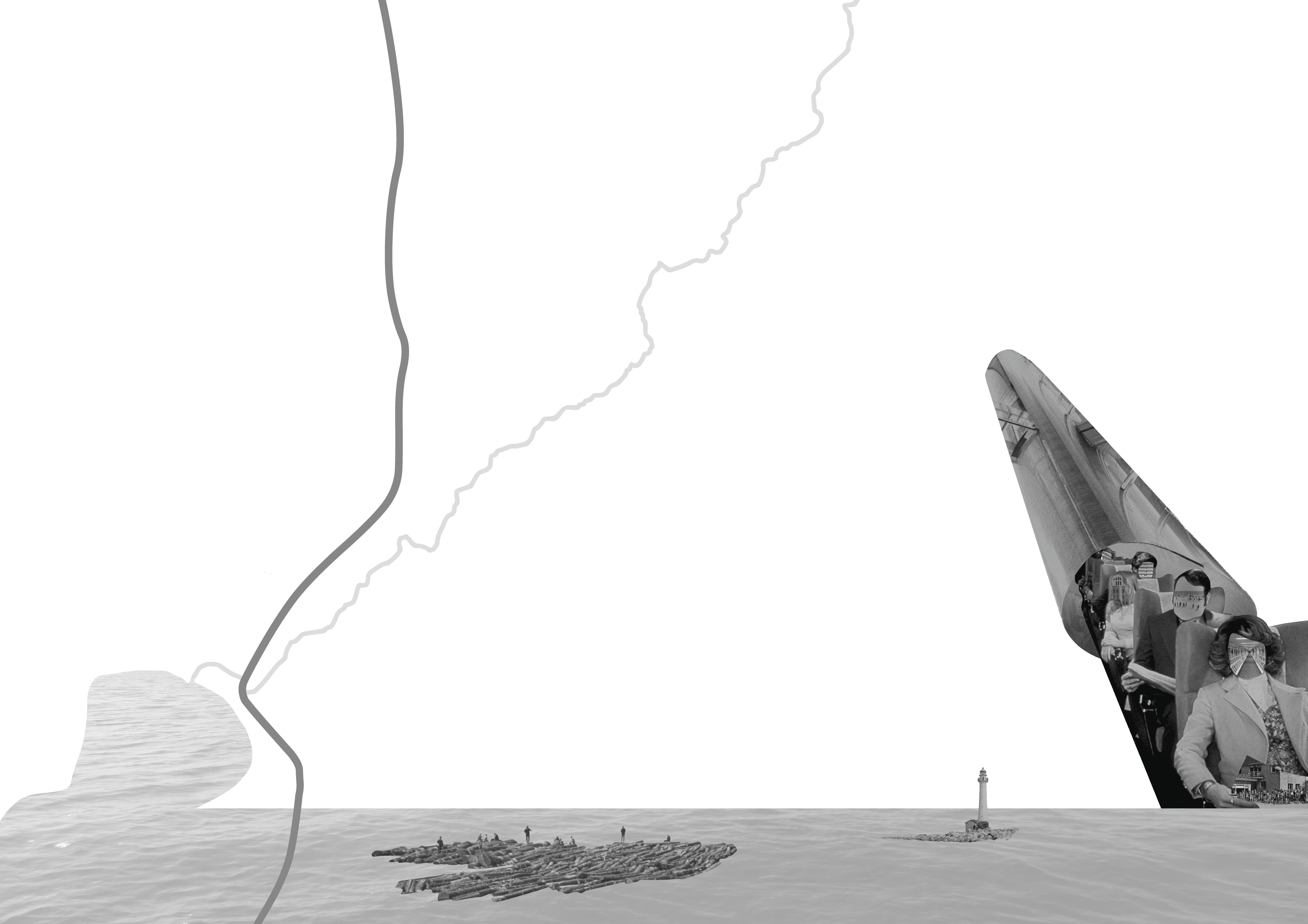 Decompressed Transition
Decompressed Transition
Paula Veidenbauma, Nora Soo and Jannik Kastrup
Pärnu is caught between diverging time regimes. In its role as a major spa and resort town, the city aims at slowing down the rhythm of life of the urban workforce. In parallel, the developments surrounding Rail Baltica will likely greatly compress this rhythm within Pärnu. The project examines frameworks of the relationship between those phenomena. It deals with instances of built and immaterial heritage and acts of preserving, especially the latter through shifting political systems. The float, emerging as the central piece of the project, can be interpreted as a gradient operating between Rail Baltica (a linear and high-velocity infrastructure), Pärnu’s leisure facilities and the open sea. It might function as a means of transportation while also exploring the possibility of non-arrival.
Visitors will be engaging with the project via a video installation, a float building workshop and a presentation. Float building instructions will be summarised in a booklet.
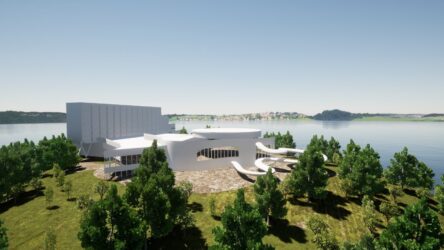 Tides of a Summer City
Tides of a Summer City
Khadeeja Farrukh, Anna Dzebliuk and Christian Hörner
The project explores possible resilient futures in Pärnu as a resort city. Showing how the “Summer City” developed historically, the video installation extrapolates empirical insights through Pärnu’s present-day reality into a future of constant flood emergency. The installation mobilizes futuristic renderings of possible resilient futures after a catastrophic flooding event to juxtapose and question the concepts of heritage, seasonality and resilience. We touch upon the inter-urban dependencies between Pärnu and Tallinn, manifesting historically, materially and spatially at the seaside of Estonia’s summer capital, securing the cities influx of holidaymakers during summer, but also causing issues of urban disenfranchisement of its residents, exploitation of its workers and destruction of coastal habitats of non-human residents. Looking into the future, it will no longer be possible to brush over the threat of flooding and the prospect of permanent crisis. The project “Tides of a Summer City” asks hypothetical questions, working towards a framework for understanding future challenges by following the changing historical tides of a summer city.
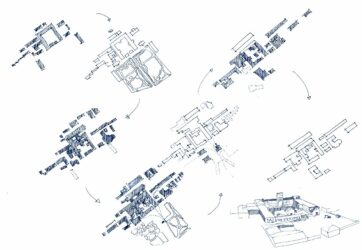
Fabricated Heritage – Interweaving the Past and Future of Sindi’s Kalevivabrik
Luca Riese Ritter, Paulina Schroeder and Augustas Lapinskas
The project explores the significance of Sindi´s industrial heritage. In recent decades, globalisation, deindustrialization, economic restructuring and industrial relocation have produced new landscapes within many European cities and towns – the post-industrial landscape. Deprived of their raison d’être, they are often regarded as spatially, socially, and semiotically empty places. In order to overcome this apparent ‘void’, the transformation of these post-industrial remnants into new uses is now an essential part of urban development practice.
Turning to industrial landscapes as potential carriers of cultural heritage ostensibly provides a framework for the continued management of these sites. Industrial heritage then becomes the bearer of local identity and creates uniqueness out of the former mundane.
The town of Sindi, a place essentially born from the settlement of a textile factory in the early 19th century, is in the process of discussing the reintegration of the material remains of industrial production into the town’s fabric which, since the closure of Kalevivabrik, the textile factory, has outgrown its original purpose. In this process of readjusting the relationship between factory-gone-ruin and the reorientation of the city, our project seeks to understand the potentials and conflicts that arise from industrial heritage, while taking a critical perspective at the practices of heritage preservation and its political implications. How and by whom is the town’s history preserved and remembered? Can there be a value of the material remains in the process of their decay? What is the role of heritage as a legal imperative? What role can the factory building play in the future of Sindi?
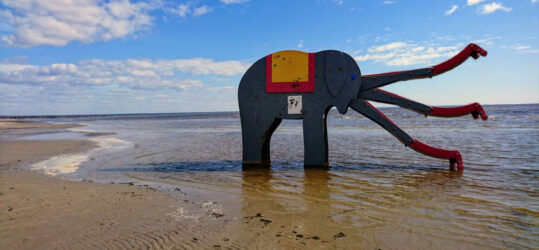 Tea, Coffee or Hot Water?: What to Make of the Boiler Room
Tea, Coffee or Hot Water?: What to Make of the Boiler Room
Kush Badhwar, Nabeel Imtiaz and Paul Simon
Drawing on the interest in the role of the educational institution Academia Non-Grata, elephants and other far-out references, the project explores junctions between the plan, the script and performance; preservation, the boiler room in the wider fabric of Pärnu; and the pitfalls and possibilities of experimental approaches to planning.
Plans for places chart a set of intentions that seek to influence the future of a place. Could the duration in which a plan is enacted be considered a performance?
Conversely, the script may be considered the plan for a performance. But despite the presence of a script, in performance, there can be room to manoeuvre in and around what is on the page, to improvise, to confront uncertainty and the yet to be known, to discover and learn from the process. Could such an approach also be applied to planning a city?
What might be discovered about prospective futures, preservation and other possibilities in Pärnu through the act of performance? Can performance and planning ever effectively speak to one another?
The possibilities of these questions are explored through three intertwined narratives of the boiler room, also the site of performance/presentation of the work: one in which the boiler room remains, structurally, as it is today; another in which the boiler room retains its shell but is appropriated over time; and, lastly in which the boiler room is razed and the site changes in purpose. Speculative fiction and alternative history take us through the boiler room and into the possible futures of the boiler room and the city of Pärnu.
Postitas Kaija-Luisa Kurik — Püsilink
“Preservation: Architecture, Nature and Politics” studio final presentations in Pärnu
Neljapäev 19 mai, 2022
Urbanistika
Preservation has achieved cultural significance as a lens through which various urban experts have come to imagine what a socially and environmentally sound future might look like. As an approach, preservation has been applied to disparate phenomena ranging from historic neighbourhoods and natural environments to democracy and identity. This studio unfolded the formative concepts and historic moments that define contemporary understandings of preservation and applied these discussions to various typologies of architecture, urban fabric and the natural environment taking Pärnu and the wider region as a case study. In particular, the studio focused on the ways in which ideas, labour and design have intersected in the past to identify alternatives to the mainstream forms of preservation.
The studio culminates with a presentation of group projects that explore a variety of approaches to layers of heritage and questions of preservation in Pärnu and Sindi. Pärnu, the fourth largest city in Estonia, is struggling with the seemingly conflicting and contradictory notions of growth, shrinkage, preservation and destruction. Sindi, as a smaller town in the region, faces similar, but also additional challenges connected to its significant industrial heritage. Efforts to imagine and construct a vision for a city are also tied up with the tactile practices of preservation; set within specific administrative and management frameworks of maintenance, care, and neglect.
Despite intentions, prescriptive visions by the city and developers can serve to exacerbate inequalities through the various infrastructures, supply chains, policies and environmental conditions that extend well beyond the rigid borders of a city.
Can the concept of preservation open a discussion around a vision for Pärnu (and its hinterlands)
beginning not with growth and progress, but rather with repair, maintenance or even deterioration?
Student projects explore who gets to decide what is valuable, organise the preservation of things, and who then carries out the work. Negotiations about what should be preserved and what “good preservation” entails, are always contingent and contextual.
Projects:
-
- Decompressed Transition: Paula Veidenbauma, Nora Soo and Jannik Kastrup
- Tides of a Summer City: Khadeeja Farrukh, Anna Dzebliuk and Christian Hörner
- Fabricated Heritage – Interweaving the Past and Future of Sindi’s Kalevivabrik: Luca Riese Ritter, Paulina Schroeder and Augustas Lapinskas
- Tea, Coffee or Hot Water?: What to Make of the Boiler Room: Kush Badhwar, Nabeel Imtiaz and Paul Simon
 Decompressed Transition
Decompressed Transition
Paula Veidenbauma, Nora Soo and Jannik Kastrup
Pärnu is caught between diverging time regimes. In its role as a major spa and resort town, the city aims at slowing down the rhythm of life of the urban workforce. In parallel, the developments surrounding Rail Baltica will likely greatly compress this rhythm within Pärnu. The project examines frameworks of the relationship between those phenomena. It deals with instances of built and immaterial heritage and acts of preserving, especially the latter through shifting political systems. The float, emerging as the central piece of the project, can be interpreted as a gradient operating between Rail Baltica (a linear and high-velocity infrastructure), Pärnu’s leisure facilities and the open sea. It might function as a means of transportation while also exploring the possibility of non-arrival.
Visitors will be engaging with the project via a video installation, a float building workshop and a presentation. Float building instructions will be summarised in a booklet.
 Tides of a Summer City
Tides of a Summer City
Khadeeja Farrukh, Anna Dzebliuk and Christian Hörner
The project explores possible resilient futures in Pärnu as a resort city. Showing how the “Summer City” developed historically, the video installation extrapolates empirical insights through Pärnu’s present-day reality into a future of constant flood emergency. The installation mobilizes futuristic renderings of possible resilient futures after a catastrophic flooding event to juxtapose and question the concepts of heritage, seasonality and resilience. We touch upon the inter-urban dependencies between Pärnu and Tallinn, manifesting historically, materially and spatially at the seaside of Estonia’s summer capital, securing the cities influx of holidaymakers during summer, but also causing issues of urban disenfranchisement of its residents, exploitation of its workers and destruction of coastal habitats of non-human residents. Looking into the future, it will no longer be possible to brush over the threat of flooding and the prospect of permanent crisis. The project “Tides of a Summer City” asks hypothetical questions, working towards a framework for understanding future challenges by following the changing historical tides of a summer city.

Fabricated Heritage – Interweaving the Past and Future of Sindi’s Kalevivabrik
Luca Riese Ritter, Paulina Schroeder and Augustas Lapinskas
The project explores the significance of Sindi´s industrial heritage. In recent decades, globalisation, deindustrialization, economic restructuring and industrial relocation have produced new landscapes within many European cities and towns – the post-industrial landscape. Deprived of their raison d’être, they are often regarded as spatially, socially, and semiotically empty places. In order to overcome this apparent ‘void’, the transformation of these post-industrial remnants into new uses is now an essential part of urban development practice.
Turning to industrial landscapes as potential carriers of cultural heritage ostensibly provides a framework for the continued management of these sites. Industrial heritage then becomes the bearer of local identity and creates uniqueness out of the former mundane.
The town of Sindi, a place essentially born from the settlement of a textile factory in the early 19th century, is in the process of discussing the reintegration of the material remains of industrial production into the town’s fabric which, since the closure of Kalevivabrik, the textile factory, has outgrown its original purpose. In this process of readjusting the relationship between factory-gone-ruin and the reorientation of the city, our project seeks to understand the potentials and conflicts that arise from industrial heritage, while taking a critical perspective at the practices of heritage preservation and its political implications. How and by whom is the town’s history preserved and remembered? Can there be a value of the material remains in the process of their decay? What is the role of heritage as a legal imperative? What role can the factory building play in the future of Sindi?
 Tea, Coffee or Hot Water?: What to Make of the Boiler Room
Tea, Coffee or Hot Water?: What to Make of the Boiler Room
Kush Badhwar, Nabeel Imtiaz and Paul Simon
Drawing on the interest in the role of the educational institution Academia Non-Grata, elephants and other far-out references, the project explores junctions between the plan, the script and performance; preservation, the boiler room in the wider fabric of Pärnu; and the pitfalls and possibilities of experimental approaches to planning.
Plans for places chart a set of intentions that seek to influence the future of a place. Could the duration in which a plan is enacted be considered a performance?
Conversely, the script may be considered the plan for a performance. But despite the presence of a script, in performance, there can be room to manoeuvre in and around what is on the page, to improvise, to confront uncertainty and the yet to be known, to discover and learn from the process. Could such an approach also be applied to planning a city?
What might be discovered about prospective futures, preservation and other possibilities in Pärnu through the act of performance? Can performance and planning ever effectively speak to one another?
The possibilities of these questions are explored through three intertwined narratives of the boiler room, also the site of performance/presentation of the work: one in which the boiler room remains, structurally, as it is today; another in which the boiler room retains its shell but is appropriated over time; and, lastly in which the boiler room is razed and the site changes in purpose. Speculative fiction and alternative history take us through the boiler room and into the possible futures of the boiler room and the city of Pärnu.
Postitas Kaija-Luisa Kurik — Püsilink
29.04.2022
Urban Ethnography – Technoecologies of care. Final presentations
Urbanistika
Urban Ethnography – Technoecologies of care. Final presentations
Reede 29 aprill, 2022
Urbanistika
01.04.2022
Kohad, millest hoolida? Kahanemise rindel Ida-Virus
Arhitektuur ja linnaplaneerimine
Kristi Grišakovi ja Keiti Kljavini juhendatud ühisstuudio näitus ja hindamine toimub 1. aprillil, 15.00–19.30, algusega EKA sisehoovis.
“Kohad, millest hoolida? Kahanemise rindel Ida-Virus” uurib erinevad ainelisi ja tunnetuslikke aspekte Ida-Virumaa elus. Fookuses on kaevandamisega seotud linnaosad ja linnad, nagu Ahtme, Kiviõli, Järve jne, kus linnakorraduslike vahenditega püütakse sekkuda inimeste valikutesse minna või jääda.
Urbanistika, arhitektuuri ning sisearhitektuuri tudengite koostöös sündinud projektid tegelevad kahanemise, kohanemise ja taaskasutuse mõtestamisega. Mõned tööd püüavad talletada kohalikke lugusid, mis on mattumas Ida-Virumaa tööstussuduse, teised püüavad mõista ajas hangunud kohalikke elamispraktikaid. Kõik tööd kasutavad nähtu mõtestamiseks teoreetilisi alusmaterjale ning tööde esitlemiseks erinevaid multimeedia lahendusi.
Kahanemine on Ida-Virumaal pidevas muutumises. Ühtpidi on see seotud kohaliku mineviku võistlevate vaadetega, teistpidi kujundab see piirkonna tulevikku, sest õiglane üleminek nõuab senise majandusstruktuuri ümberpööramist ja piinlikult suur süsinikuemissioon sunnib otsima uusi narratiive. Kuigi kahanemist seostatakse mahajäänud keskkonnaga ning tühjaks jäänud elamufondiga, siis uurides selles elamist võime avastada rikkaliku kogemustepagasi, milles väljendub omapärane leppimine ning visadus. Kahanevat linnakeskkonda peetakse sageli ka häirivaks keskkonnaks, kuid miks me oleme harjunud mõtestama linnade atraktiivsust vaid läbi kasvu? Kas ka tasakasv võiks olla ilus?
Postitas Andres Lõo — Püsilink
Kohad, millest hoolida? Kahanemise rindel Ida-Virus
Reede 01 aprill, 2022
Arhitektuur ja linnaplaneerimine
Kristi Grišakovi ja Keiti Kljavini juhendatud ühisstuudio näitus ja hindamine toimub 1. aprillil, 15.00–19.30, algusega EKA sisehoovis.
“Kohad, millest hoolida? Kahanemise rindel Ida-Virus” uurib erinevad ainelisi ja tunnetuslikke aspekte Ida-Virumaa elus. Fookuses on kaevandamisega seotud linnaosad ja linnad, nagu Ahtme, Kiviõli, Järve jne, kus linnakorraduslike vahenditega püütakse sekkuda inimeste valikutesse minna või jääda.
Urbanistika, arhitektuuri ning sisearhitektuuri tudengite koostöös sündinud projektid tegelevad kahanemise, kohanemise ja taaskasutuse mõtestamisega. Mõned tööd püüavad talletada kohalikke lugusid, mis on mattumas Ida-Virumaa tööstussuduse, teised püüavad mõista ajas hangunud kohalikke elamispraktikaid. Kõik tööd kasutavad nähtu mõtestamiseks teoreetilisi alusmaterjale ning tööde esitlemiseks erinevaid multimeedia lahendusi.
Kahanemine on Ida-Virumaal pidevas muutumises. Ühtpidi on see seotud kohaliku mineviku võistlevate vaadetega, teistpidi kujundab see piirkonna tulevikku, sest õiglane üleminek nõuab senise majandusstruktuuri ümberpööramist ja piinlikult suur süsinikuemissioon sunnib otsima uusi narratiive. Kuigi kahanemist seostatakse mahajäänud keskkonnaga ning tühjaks jäänud elamufondiga, siis uurides selles elamist võime avastada rikkaliku kogemustepagasi, milles väljendub omapärane leppimine ning visadus. Kahanevat linnakeskkonda peetakse sageli ka häirivaks keskkonnaks, kuid miks me oleme harjunud mõtestama linnade atraktiivsust vaid läbi kasvu? Kas ka tasakasv võiks olla ilus?
Postitas Andres Lõo — Püsilink
18.02.2022
EKA teaduskohvik: Mida urbanistid teevad?
Teadus- ja arendusosakond
EKA teaduskohvik:
Mida urbanistid teevad? Linnauurimusest praktikateni
Urbanistika eriala on Kunstiakadeemias õpetatud kuusteist aastat, magistrikraadi on saanud 48 tudengit. Eestis hariduse saanud urbanistid tegutsevad nii teaduses, avalikus kui erasektoris, siin kui mujal maailmas.
Kutsume osalema aruteluõhtul, kus avame selle teooria ja praktika piirimail asuva valdkondadevahelise eriala väljundeid ning räägime täpsemalt, mida urbanistid teevad.
Küsime: mis on urbanismi valdkonna kõige aktuaalsemad uurimissuunad täna, mis on Eesti urbanismi eripärad ja milline on urbanistika õppekava roll valdkonna mõtestamisel?
Vestlusringis räägib õppekava juht prof Maroš Krivý enda uurimusest, muuhulgas Marie Skłodowska-Curie nimelisest alustava teadlase grandist kaasaegse linnaajaloo uurimiseks. Oma tegevusi avavad õppejõud Keiti Kljavin ja Kaija-Luisa Kurik. Lisaks osalevad arutelul urbanistika doktorandid Mattias Malk ja Sean Tyler.
Pakume kohvi ja suupisteid!
Vestlusring on inglise keeles.
Sündmust toetab Euroopa Regionaalarengu Fond
Postitas Andres Lõo — Püsilink
EKA teaduskohvik: Mida urbanistid teevad?
Reede 18 veebruar, 2022
Teadus- ja arendusosakond
EKA teaduskohvik:
Mida urbanistid teevad? Linnauurimusest praktikateni
Urbanistika eriala on Kunstiakadeemias õpetatud kuusteist aastat, magistrikraadi on saanud 48 tudengit. Eestis hariduse saanud urbanistid tegutsevad nii teaduses, avalikus kui erasektoris, siin kui mujal maailmas.
Kutsume osalema aruteluõhtul, kus avame selle teooria ja praktika piirimail asuva valdkondadevahelise eriala väljundeid ning räägime täpsemalt, mida urbanistid teevad.
Küsime: mis on urbanismi valdkonna kõige aktuaalsemad uurimissuunad täna, mis on Eesti urbanismi eripärad ja milline on urbanistika õppekava roll valdkonna mõtestamisel?
Vestlusringis räägib õppekava juht prof Maroš Krivý enda uurimusest, muuhulgas Marie Skłodowska-Curie nimelisest alustava teadlase grandist kaasaegse linnaajaloo uurimiseks. Oma tegevusi avavad õppejõud Keiti Kljavin ja Kaija-Luisa Kurik. Lisaks osalevad arutelul urbanistika doktorandid Mattias Malk ja Sean Tyler.
Pakume kohvi ja suupisteid!
Vestlusring on inglise keeles.
Sündmust toetab Euroopa Regionaalarengu Fond
Postitas Andres Lõo — Püsilink
18.12.2021
Urbanistide ekspeditsioon-näitus Paljassaare ajakapslites
Urbanistika
Paljassaare. Ühelt poolt rohelus ja rahu, linnud ja varemed, pääs linnast, igavesest kiirustamisest. Teisalt varemed ja olnud reaalsused, mis on kehtetuks kuulutatud, deklareeritud tühjus, mis teeb ruumi pöörastele uutele ulmadele, spekulatsioonidele, plaanidele kohe-kohe saabuva veel rohelisema, helgema, õigema tuleviku jaoks.
EKA urbanistika magistriprogrammi tudengid kutsuvad kõiki Paljassaarde, et võtta 18. detsembril ühe lühikese talvepäevaga kokku semestrijagu uuringuid Tallinna kuumemaks spekuleerimisobjektiks oleva poolsaare minevikest ja tulevikest.
Ekspeditsioon-näitusel osalejaid juhitakse läbi kümne eri ajakapsli – kohaspetsiifilise installatsooni, audiorännaku, näituse, aktsiooni jmt – mis heidavad valgust neoliberaalse linnaloome ning poolsaare igapäevareaalsuse kummastavatele kokkupuutepunktidele.
Programm ja rohkem infot @ www.artun.ee/urbanstudies
Sündmus Facebookis
Postitas Andres Lõo — Püsilink
Urbanistide ekspeditsioon-näitus Paljassaare ajakapslites
Laupäev 18 detsember, 2021
Urbanistika
Paljassaare. Ühelt poolt rohelus ja rahu, linnud ja varemed, pääs linnast, igavesest kiirustamisest. Teisalt varemed ja olnud reaalsused, mis on kehtetuks kuulutatud, deklareeritud tühjus, mis teeb ruumi pöörastele uutele ulmadele, spekulatsioonidele, plaanidele kohe-kohe saabuva veel rohelisema, helgema, õigema tuleviku jaoks.
EKA urbanistika magistriprogrammi tudengid kutsuvad kõiki Paljassaarde, et võtta 18. detsembril ühe lühikese talvepäevaga kokku semestrijagu uuringuid Tallinna kuumemaks spekuleerimisobjektiks oleva poolsaare minevikest ja tulevikest.
Ekspeditsioon-näitusel osalejaid juhitakse läbi kümne eri ajakapsli – kohaspetsiifilise installatsooni, audiorännaku, näituse, aktsiooni jmt – mis heidavad valgust neoliberaalse linnaloome ning poolsaare igapäevareaalsuse kummastavatele kokkupuutepunktidele.
Programm ja rohkem infot @ www.artun.ee/urbanstudies
Sündmus Facebookis
Postitas Andres Lõo — Püsilink
07.12.2021 — 18.12.2021
Urbanistika: näitus ja jalutuskäik
Urbanistika
Detsembris kutsub urbanistika õppekava kahele avalikule üritusele. 7. detsembril avavad tudengid näituse “Fitness ja linn”, mis toob kokku teemad eluasemest ja hoolest normatiivsuse ja semio-kapitalismini küsides kuidas “fitness” toodab kaasaegses linnas väärtust.
18. detsembril kutsuvad tudengid taasavastama Paljassaart, esitledes kohaspetsiifilisi sekkumisi, mis uurivad, kuidas neoliberaalne urbanism ja vastuseis sellele kujundavad seda linnalähedast poolsaart täna ja tulevikus. Kahe eraldiseisva uurimisstuudio kursuse tulemusena illustreerivad näitus ja sekkumis-festival urbanistika programmi rõhuasetust kriitilisel teoorial ja välitöödel.
Hoia ennast sündmustega ühel lainel urbanistika kodulehel
Postitas Andres Lõo — Püsilink
Urbanistika: näitus ja jalutuskäik
Teisipäev 07 detsember, 2021 — Laupäev 18 detsember, 2021
Urbanistika
Detsembris kutsub urbanistika õppekava kahele avalikule üritusele. 7. detsembril avavad tudengid näituse “Fitness ja linn”, mis toob kokku teemad eluasemest ja hoolest normatiivsuse ja semio-kapitalismini küsides kuidas “fitness” toodab kaasaegses linnas väärtust.
18. detsembril kutsuvad tudengid taasavastama Paljassaart, esitledes kohaspetsiifilisi sekkumisi, mis uurivad, kuidas neoliberaalne urbanism ja vastuseis sellele kujundavad seda linnalähedast poolsaart täna ja tulevikus. Kahe eraldiseisva uurimisstuudio kursuse tulemusena illustreerivad näitus ja sekkumis-festival urbanistika programmi rõhuasetust kriitilisel teoorial ja välitöödel.
Hoia ennast sündmustega ühel lainel urbanistika kodulehel
Postitas Andres Lõo — Püsilink
07.12.2021
“Fitness ja linn” lõpuhindamise näitus
Urbanistika
Olete oodatud liituma 7. detsembril kell 15.00 teadusstuudio kursuse “Fitness ja linn” lõpphindamisega. Hindamine toimub näituse avamisel ruumis A500 (terrassi lähedal asuv avatud ala).
“Fitnessi” all mõeldakse kõige sagedamini keha kujundamist treeningu kaudu. Kuid kui mõelda läbi urbanistika valdkonna pakutava objektiivi, tõstatab “fitness” laiemaid küsimusi selle kohta, kes me oleme ja millistes linnades me elame: millised on linnalised ja muud struktuurid, mis meid kujundavad? Mis teeb elu elatavaks? Kas need on normid, harjumused, enesehoolduse rutiinid? Kas see on meie keskkond või on see hirm selle ees, kelleks me võime saada?
Näitusel ühendavad EKA tudengid Daria Khrystych, Mira Samonig, Luisa Fernanda Ayala Torres, Alexander Nenenko ja Dorothea Müller teooriat, uurimistööd ja disainimeetodeid, et pakkuda neile küsimustele unikaalseid vastuseid.
Kursus on osa linnauuringute magistriõppest ning seda õpetavad Maros Krivy, Leonard Ma ja Helen Runting.
Sündmus Facebookis.
Pildi allikas New York Timesis
Postitas Andres Lõo — Püsilink
“Fitness ja linn” lõpuhindamise näitus
Teisipäev 07 detsember, 2021
Urbanistika
Olete oodatud liituma 7. detsembril kell 15.00 teadusstuudio kursuse “Fitness ja linn” lõpphindamisega. Hindamine toimub näituse avamisel ruumis A500 (terrassi lähedal asuv avatud ala).
“Fitnessi” all mõeldakse kõige sagedamini keha kujundamist treeningu kaudu. Kuid kui mõelda läbi urbanistika valdkonna pakutava objektiivi, tõstatab “fitness” laiemaid küsimusi selle kohta, kes me oleme ja millistes linnades me elame: millised on linnalised ja muud struktuurid, mis meid kujundavad? Mis teeb elu elatavaks? Kas need on normid, harjumused, enesehoolduse rutiinid? Kas see on meie keskkond või on see hirm selle ees, kelleks me võime saada?
Näitusel ühendavad EKA tudengid Daria Khrystych, Mira Samonig, Luisa Fernanda Ayala Torres, Alexander Nenenko ja Dorothea Müller teooriat, uurimistööd ja disainimeetodeid, et pakkuda neile küsimustele unikaalseid vastuseid.
Kursus on osa linnauuringute magistriõppest ning seda õpetavad Maros Krivy, Leonard Ma ja Helen Runting.
Sündmus Facebookis.
Pildi allikas New York Timesis
Postitas Andres Lõo — Püsilink
09.12.2021
Urbanistika magistriõppekava infotund sisseastujatele
Urbanistika
EKA urbanistika eriala kutsub kõiki magistriõppehuvilisi osalema rahvusvahelist õppekava tutvustaval online-infotunnil, mis toimub neljapäeval, 9. detsembril 2021 kell 16:00 Zoomis.
Hea võimalus teada saada, kuidas toimub magistriõpe urbanistika erialal, kuidas valmistuda sisseastumiseks ja mida kandidaatidelt oodatakse. Võimalus küsida küsimusi. Kuna tegu on rahvusvahelise õppekavaga, siis infotund toimub inglise keeles.
Huvilistel palutakse registreeruda alloleva lingi kaudu. Vahetult enne infotunni algust saadetakse osalejatele Zoomi link.
Registreerumne on lõppenud.
Infotunni salvestus SIIN.
Rohkem infot Urbanistika magistriõppekava kohta leiab siit:
Vastuvõtt EKA rahvusvahelisele urbanistika magistriõppekavale algab 1. veebruaril 2022 ning kestab kuni 1. märtsini. Lisainfo vastuvõtu kohta.
Postitas Maarja Pabut — Püsilink
Urbanistika magistriõppekava infotund sisseastujatele
Neljapäev 09 detsember, 2021
Urbanistika
EKA urbanistika eriala kutsub kõiki magistriõppehuvilisi osalema rahvusvahelist õppekava tutvustaval online-infotunnil, mis toimub neljapäeval, 9. detsembril 2021 kell 16:00 Zoomis.
Hea võimalus teada saada, kuidas toimub magistriõpe urbanistika erialal, kuidas valmistuda sisseastumiseks ja mida kandidaatidelt oodatakse. Võimalus küsida küsimusi. Kuna tegu on rahvusvahelise õppekavaga, siis infotund toimub inglise keeles.
Huvilistel palutakse registreeruda alloleva lingi kaudu. Vahetult enne infotunni algust saadetakse osalejatele Zoomi link.
Registreerumne on lõppenud.
Infotunni salvestus SIIN.
Rohkem infot Urbanistika magistriõppekava kohta leiab siit:
Vastuvõtt EKA rahvusvahelisele urbanistika magistriõppekavale algab 1. veebruaril 2022 ning kestab kuni 1. märtsini. Lisainfo vastuvõtu kohta.
Postitas Maarja Pabut — Püsilink
03.11.2021
Ringmajanduse KUIDAS? sessioon EKA proffidega
Arhitektuur ja linnaplaneerimine
Disainikeskuse “Ringmajanduse KUIDAS? sessioon”.
Oma kogemusi jagavad disainerid EKA arhitektuuri ja linnaplaneerimise vilistlane Martin Voltri ja Kristi Rummel-Kottise ning arhitekt dr Sille Pihlak. Vestlust suunab urbanist Mattias Malk.
Sel korral lähemalt jätkusuutlikust linnaruumist:
Milline on jätkusuutlik linnaruum? Millised on inimsõbralikud tänavad? Mida tähendab viidandus jätkusuutlikus linnaruumis? Mida tähendab keskkonnasõbralik arhitektuur?
Postitas Andres Lõo — Püsilink
Ringmajanduse KUIDAS? sessioon EKA proffidega
Kolmapäev 03 november, 2021
Arhitektuur ja linnaplaneerimine
Disainikeskuse “Ringmajanduse KUIDAS? sessioon”.
Oma kogemusi jagavad disainerid EKA arhitektuuri ja linnaplaneerimise vilistlane Martin Voltri ja Kristi Rummel-Kottise ning arhitekt dr Sille Pihlak. Vestlust suunab urbanist Mattias Malk.
Sel korral lähemalt jätkusuutlikust linnaruumist:
Milline on jätkusuutlik linnaruum? Millised on inimsõbralikud tänavad? Mida tähendab viidandus jätkusuutlikus linnaruumis? Mida tähendab keskkonnasõbralik arhitektuur?
Postitas Andres Lõo — Püsilink

